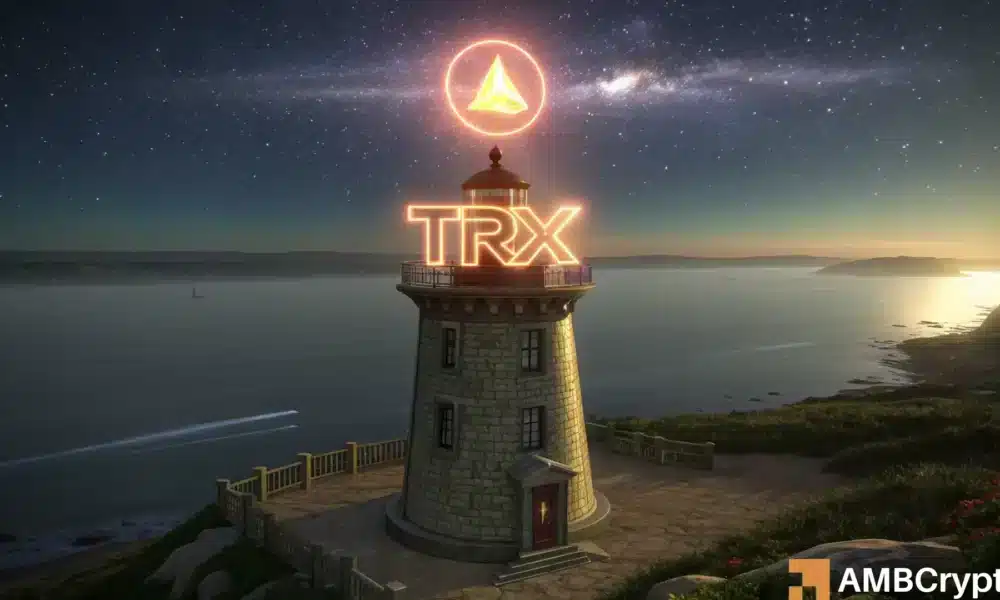The Resilience of TRON (TRX): Analyzing Market Movements and Future Prospects
Introduction
In the volatile world of cryptocurrency, TRON (TRX) has faced significant challenges recently, notably dropping to a swing low of $0.30 on October 11, reflecting a 10.98% decline during a general market sell-off. However, the underlying metrics suggest a more complex narrative that may signify resilience. This article explores TRON’s recent market performance, its relative strength against Bitcoin (BTC), and what the future may hold for investors.
TRON’s Recent Market Activity
Despite the steep decline, TRON’s fundamental indicators suggest there was no widespread panic selling among holders. Key metrics such as Network Activity and Exchange Balances indicate stability, pointing to a potential short-term recovery for TRX. Interestingly, the Coin Days Destroyed (CDD) metric has shown minimal on-chain activity, suggesting that the price movement was predominantly influenced by trading on exchanges rather than mass selling among long-term holders. Tokens not listed on centralized exchanges also appeared to suffer less during this downturn, reinforcing the premise that TRON may not be as fundamentally weak as it appears.
Relative Strength Against BTC
On October 11, TRON’s BTC pairing gained 2.1%, while leading assets like Ethereum (ETH) and Solana (SOL) experienced declines of 3.86% and 8.27%, respectively. This indicates a relative resilience for TRON amidst a broader market downturn. However, it’s essential for investors to tread carefully; although the TRX/BTC pair shows strength, it still operates within a bearish structure on the daily chart, particularly sitting at a crucial support level established since late July. The juxtaposition of TRX’s strength against Bitcoin with its overall bearish trend underscores the need for cautious optimism among traders.
Assessing Support Levels
Fueled by these observations, analysts speculate a bullish breakout may be on the horizon, predicting a potential rise to $0.37. Despite the challenges posed by market dynamics, the $0.30 support level has successfully held firm. Historically, this level has acted as a solid buffer since July, although the bearish structure is evident as TRX consistently struggled to surpass the $0.353 mark. The downtrends in both the 20-day and 50-day Exponential Moving Averages (EMAs), coupled with a Money Flow Index (MFI) below 50, suggest that selling pressure remains a significant factor in price movements.
A Long-Term Perspective
While the daily outlook casts a shadow on TRON’s short-term prospects, the weekly chart paints a more encouraging picture. Analysts indicate that long-term holders may find comfort in TRX’s past performance, noting that the cryptocurrency is only 12.57% off its all-time high. Since the market correction in March, TRX has shown remarkable stability, avoiding significant drawdowns until October. Thus, many traders are adopting a wait-and-see approach, especially with Bitcoin’s potential price movements slated for October 13 possibly affecting the broader market.
Conclusion and Market Outlook
In essence, while TRON (TRX) faces immediate challenges in a bearish daily structure, its resilience against BTC and the holding of critical support levels present a compelling case for cautious optimism. Traders should remain vigilant, watching for Bitcoin’s next moves, as these could substantially influence TRON’s trajectory. The forthcoming days may reveal whether TRON can rebound toward the $0.33–$0.35 zone or if further declines are inevitable. Overall, the current market dynamics suggest that TRON holds promise, making it a noteworthy asset for investors navigating the turbulent crypto landscape.


